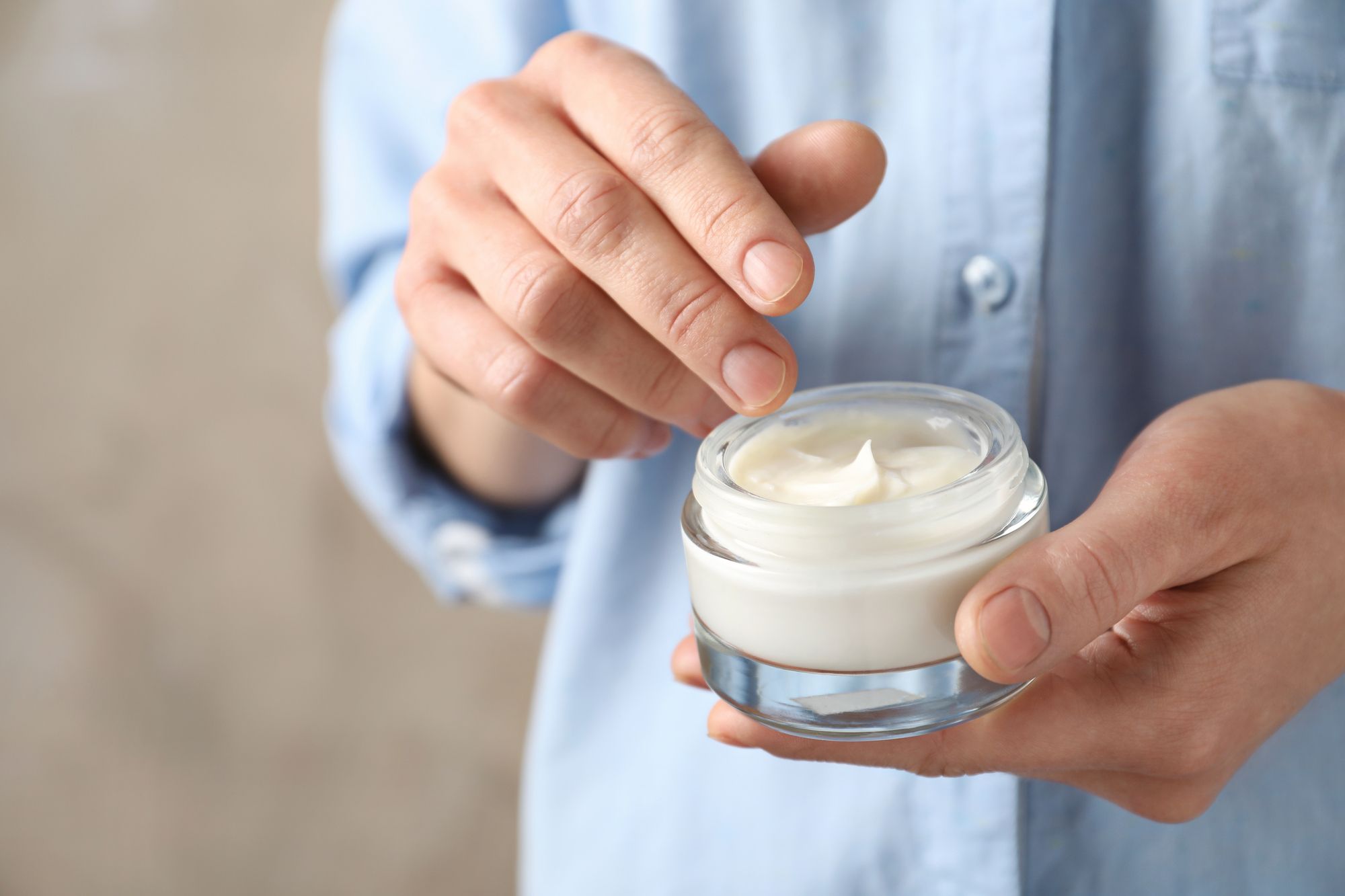What is Topical Chemotherapy?
Topical chemotherapy, also known as field therapy, is the use of a topical product to treat cancerous or precancerous skin lesions on a specific place or a specific geographic area of the skin (like the face, scalp, or hands). These creams or solutions are applied directly to the skin as directed by a doctor.
What Are the Common Uses of Topical Chemotherapy?
Field therapy is most commonly used to treat sun-exposed areas with many precancerous lesions. The easiest way to treat a precancerous lesion is to freeze it during your full skin exam. However, if you have 25+ lesions on your face and scalp, freezing isn’t the most thorough approach. With topical chemotherapy, you’re able to apply the medication over the entire area.
We also use topical chemotherapy as a nonsurgical alternative to treating specific types of skin cancer. Superficial basal cell carcinoma responds well to topical chemotherapy. We can also use it as an early squamous cell carcinoma treatment. In rare cases, it targets a specific early form of melanoma.
Are There Different Types of Topical Chemotherapy?
There are five primary medications used for topical chemotherapy available in either creams or solutions:
Fluorouracil (known as 5-FU, Effudex, Carac) comes in a 5% cream and is often used to treat actinic keratosis and superficial basal cell carcinoma. We recommend using this 1-2 times per day for 1-4 weeks. While patients appreciate a short course of treatment, the inflammation is intense during this period.
Imiquimod (branded as Aldara) also treats actinic keratosis and superficial basal cell carcinoma. For actinic keratosis, application is 2 times/ week for a few months which results in less inflammation than 5-FU, but the course of treatment is significantly longer. This medication can also be used off-label for nodular basal cell carcinoma and certain types of melanoma where surgery isn’t an option.
Solaraze gel is a topical version of diclofenac (similar to ibuprofen or non-steroidal anti-inflammatory medications). This is the least inflammatory option, but it requires a twice per day application over at least three months. Some prefer this medication because it results in a slower burn with less inflammation, pain, redness, and scabbing, but it’s a longer commitment to treatment.
Ingenol mebutate (branded as Picato) offers a short treatment course. Lesions on the face and scalp only need a three-day treatment. Lesions on the body tolerate a higher concentration of the medication and only need a two-day treatment. Because the treatment is so compressed, it’s extremely inflammatory.
Photodynamic therapy (PDT) isn’t a cream or a solution, but an in-office treatment. PDT is used along with aminolevulinic acid. The patient comes to the office, the doctor applies the medication, and the patient waits in the office for 2-3 hours. They cannot be in the sunlight during this time. The patient then sits in front of a blue light that specifically activates the medication for 17 minutes.
What Should You Expect During Treatment?
Before any topical chemotherapy, we ask patients if they have a history of oral herpes or cold sores. If so, there’s a risk that these medications or light therapy can trigger an outbreak. We prevent this by giving them medication to proactively prevent an outbreak.
During (and after) any of these treatments, limit sun exposure. During time outside, wear a wide-brim hat and apply sunscreen. Your skin is inflamed because you’re undergoing treatment. Sun exposure will increase this inflammation.
While field therapy is often the best treatment option, it’s accompanied by some uncomfortable side effects. Expect inflammation when using topical chemotherapy. The medicine works because it’s absorbed by the bad cells (precancerous or cancerous). As those cells die, they turn red, scab, and swell.
Depending on which topical product you’re using, it may take a few days for the inflammation to start. Once it does, the inflammation will progressively intensify over the course of treatment resulting in increased redness and scabbing.
FAQ’s About Topical Chemotherapy
How Often Will I Need Topical Chemotherapy?
For some patients, one round of topical chemotherapy is all that’s necessary to treat their current skin lesions. However, topical chemotherapy is also a preventative measure against future skin cancer. Many patients use topical chemotherapy quarterly to actively combat skin cancer.
Is Topical Chemotherapy Right For Me?
If you’re looking to treat damaged skin cells and your doctor recommends field therapy or topical chemotherapy, make an informed decision. Talk to your dermatologist about the medication they’d recommend, how many rounds they suspect you’ll need, and how many areas need to be treated. For many patients, topical chemotherapy is the perfect treatment for both their lifestyle and the health of their skin.
Click here to find an Epiphany provider near you.


